Get PeakVisor App
Sign In
Search by GPS coordinates
- Latitude
- ° ' ''
- Longitude
- ° ' ''
- Units of Length

Yes
Cancel
Share ×

Scan the QR code and open PeakVisor on your phone
❤ Wishlist ×
Choose
Delete
The Riserva Naturale Val Rosandra, located near Trieste in northeastern Italy, is a reserve featuring unique geological features and biodiversity. The valley was carved by the Rosandra River and is characterized by dramatic limestone cliffs, deep gorges, and cascading waterfalls. The habitat is primarily Mediterranean shrubland, with panoramic views of the Adriatic Sea and the surrounding Karst Plateau. Val Rosandra is also home to ancient trails and remnants of Roman aqueducts that once supplied water to Trieste. There are 9 named mountains in Riserva Naturale Val Rosandra / Naravni Rezervat Dolina Glinščice. Jirmanec (670 m / 2,198ft) is the highest point. The most prominent mountain is Mali Kras (457m / 1,499ft).
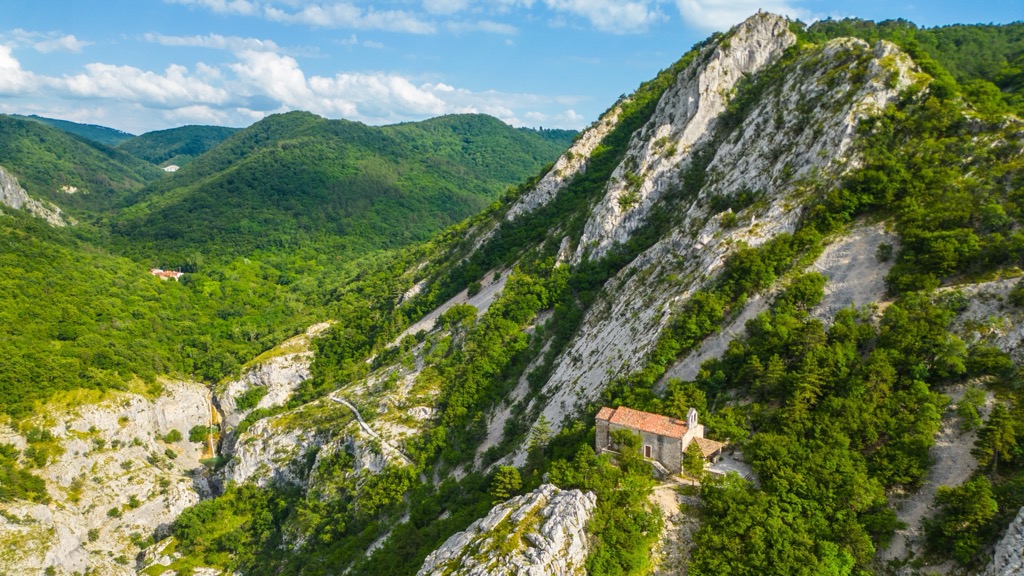
Val Rosandra (Italian: Riserva Naturale Val Rosandra, Slovenian: Naravni Rezervat Dolina Glinščice) is located in the municipality of Dolina in the Friuli-Venezia Giulia region of Italy. The protected area was established on September 30, 1996, and is part of the Natura 2000 European network.

The reserve encompasses the valley through which the Glinščica River flows. The whole watershed is within the Trieste Karst region. A deep gorge cuts through the Karst plateau, while the surrounding hills reach several hundred meters in elevation. Notable attractions include the 40 m (131 ft) Supet Falls near the village of Botazzo and the Our Lady of Siaris Church perched high in the hills.
The reserve covers 24.5 sq. km (15 sq. mi). It shares borders with Trieste, Muggia, and the Republic of Slovenia. The municipality is bilingual (Slovene-Italian) due to its indigenous Slovene population.
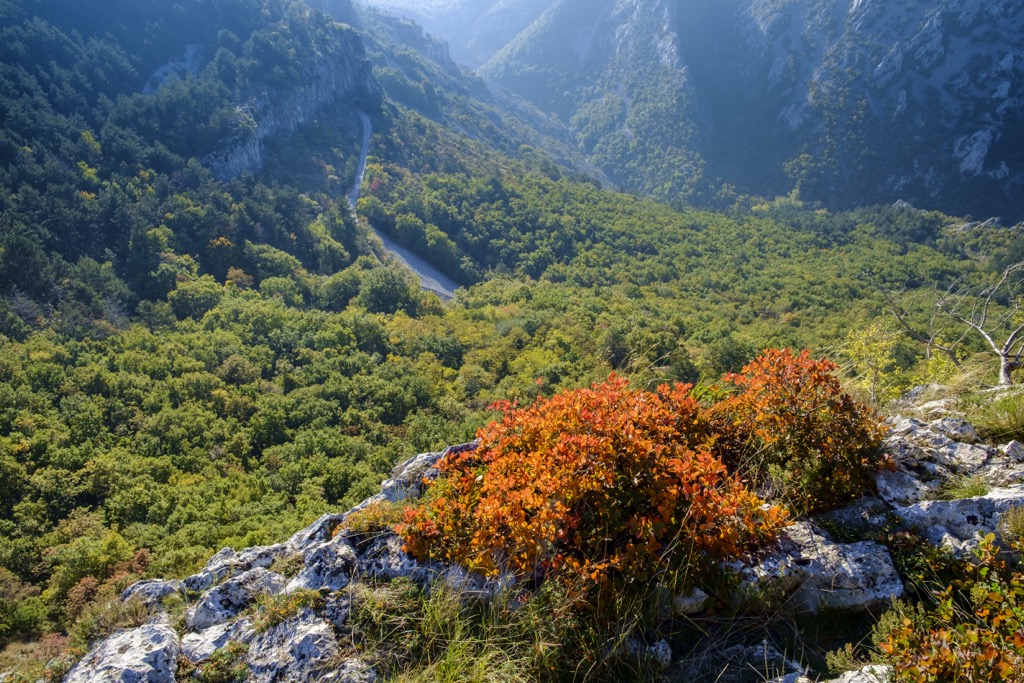
Val Rosandra is defined by Karst rock layers dating back 40-45 million years. These layers include Palaeocene and Eocene limestones, representing the final stages of sedimentation in the Tethys Sea. Additionally, there are Eocene flysch sandstones and marls.
Val Rosandra’s geomorphology sets it apart in the Trieste Karst, with limited agriculture due to the challenging flysch terrain near Botazzo. Though once practiced, livestock grazing was eventually abandoned due to steep and stony slopes.
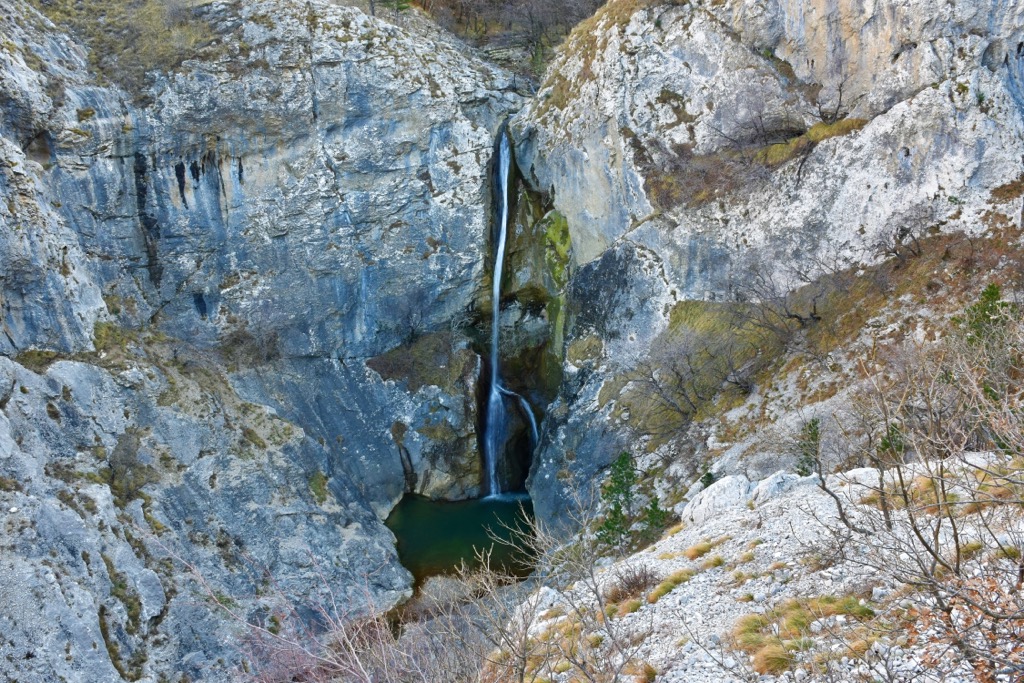
Val Rosandra-Dolina Glinščice boasts the only surface stream in the Trieste Karst. The diverse vegetation includes over 1,000 fungi, 988 vascular plants, and 300 lichens. Many alpine and Mediterranean plants that disappeared in the surrounding areas have survived here, including alpine wolf, wild pear, and coastal grass. Flatter areas feature heaths and grasses, while the streamside exhibits vegetation typical of wetter environments, showcasing vibrant blooms in spring and autumn.
Aspect makes a significant difference in Val Rosandra. Due to varying exposure to the sun and wind, different areas at the same elevation can have temperature differences exceeding 10 degrees Celsius, significantly influencing local vegetation.
The diverse fauna includes over 130 bird species, with around 70 nesting in the area. Mammals like roe deer, wild boar, hare, squirrel, and fox are numerous. The valley also houses several rare reptiles and amphibians. The abundance of caves and caverns contributes to a sizable bat population, particularly horseshoe bats.
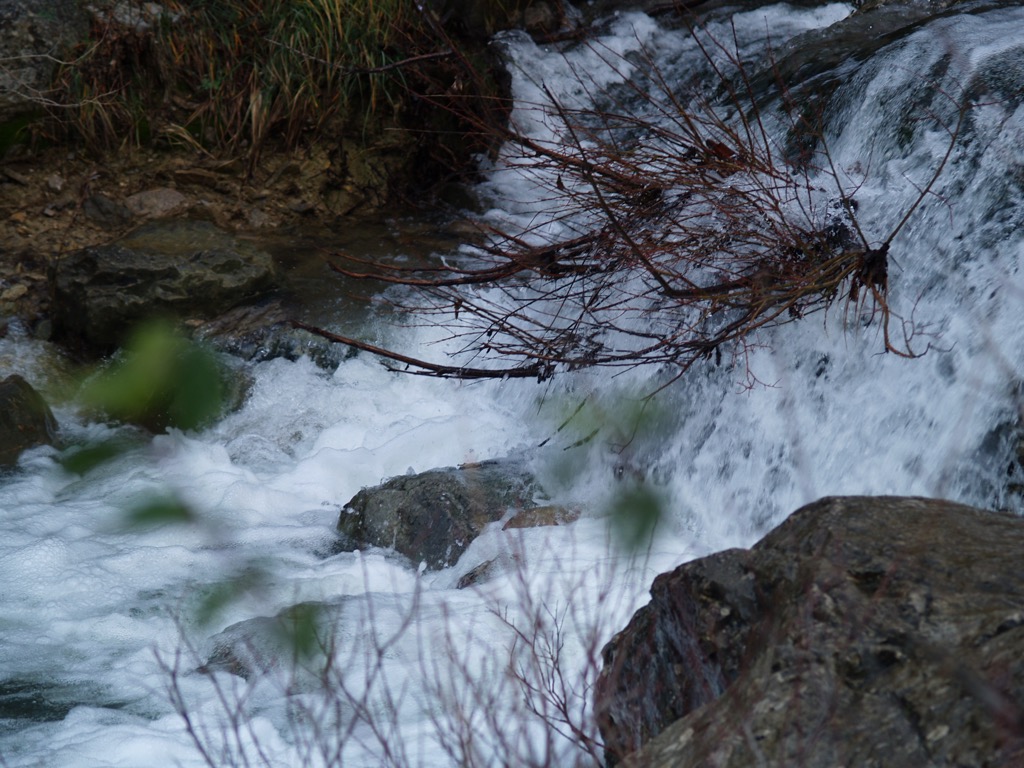
The Glinščica valley has been inhabited since prehistoric times, with archaeological sites confirming continuous occupation from the Neolithic to the present. Caves served as practical living spaces with cool air during the hot summers. Moreover, as the only natural route from Slovenia to the sea, the valley saw traffic throughout the historical period.
Romans built a 14 km (8,6 mi) water supply from the Glinščica Springs to Trieste in the first century. The aqueduct, guarded by a military crew, served its purpose until it was eventually compromised around the seventh century after the Roman Empire collapsed.

The mouth of the Glinščica once had extensive salt flats, a source of wealth until the late Middle Ages. Conflict over these salt pans led to centuries of fighting between Trieste and the Venetians. Mills for spice processing also appeared along Glinščica, documented as early as 1276.
Local traditions still live on. Osmiza is a cultural practice unique to the Karst region of northeastern Italy and southwestern Slovenia, where local farmers open their homes or vineyards to the public to sell their homemade products directly. Osmiza originated from Empress Maria Theresa's 1784 authorization for local farmers to sell wine for eight days. The term "osmiza" comes from the Slovenian word "osem," meaning "eight," which historically referred to the eight days that farmers were allowed to sell their goods tax-free.
Today, Osmizas typically operate for short periods, often signaled by an evergreen branch or a sign hung outside the property. Typical fare includes cured meats, cheeses, wines, and pickled vegetables, all produced by the hosts.
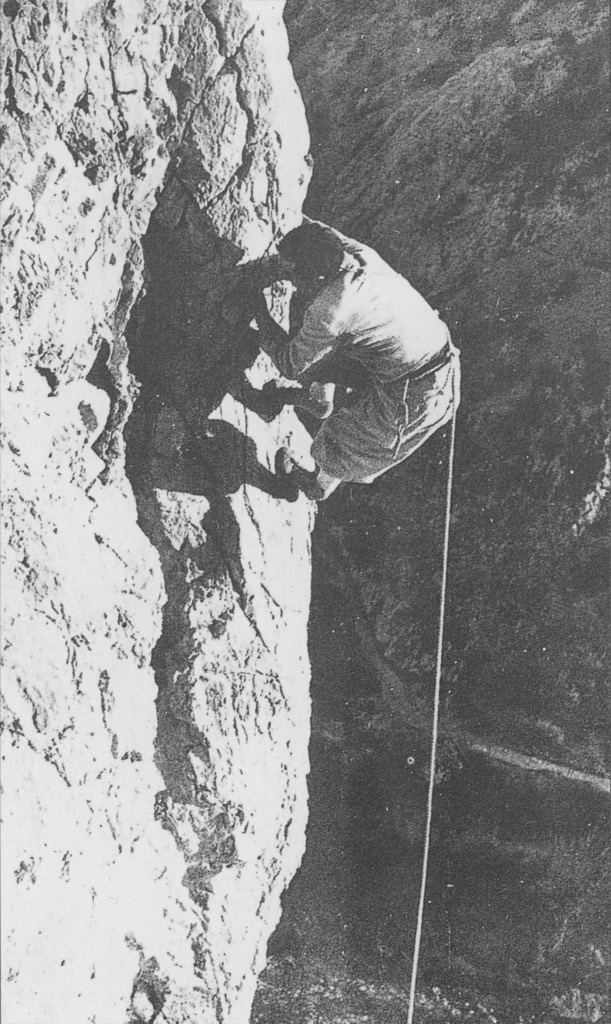
The Giordana Cottur is the sole route for both cycling and walking from Trieste to the Reserve. It is suitable for all and provides the option to reach Kozina or stop at Bottazzo-Botač. The path allows direct access from downtown Trieste to the pristine beauty of Val Rosandra - Dolina Glinščice.
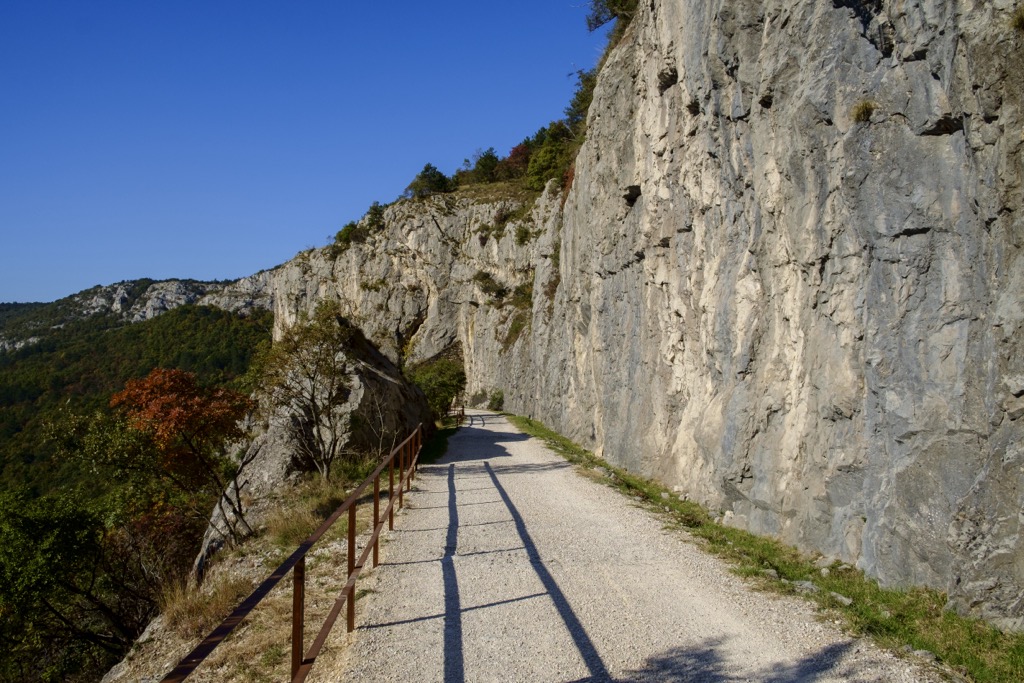
Following the ancient salt road, historically used by merchants to access the Trieste salt pans, the path is believed to mirror the route of Martin Krpan, a legendary Slovenian figure who smuggled salt from Istria on his mule. The trail was born in 1981 by cross-border residents during the inaugural Open Border initiative and has become a lasting tradition.
The route goes from Bagnoli della Rosandra-Boljunec, following CAI path n.1 to Bottazzo-Botač. Cross the bridge, marking the Italy-Slovenia border, and continue towards Beka-Ocizla, traversing woodlands and karst landscapes. Optionally, combine it with the Val Rosandra Waterfall trail for a total distance of around 4 mi (6.4 km).
This 17 km (10.6 mi) hike meanders along the Slovenia-Italy border, traversing the karst plateau, encompassing Hills Kokoš and Veliko Gradišče, and concluding in Bagnoli della Rosandra.
Optionally, explore the Cave Vilenica, Europe's oldest tourist cave, and proceed through Hill Kokoš to the reserve. Along the way, consider halting at the welcoming homesteads, offering accommodation and delectable local Karst culinary specialties.
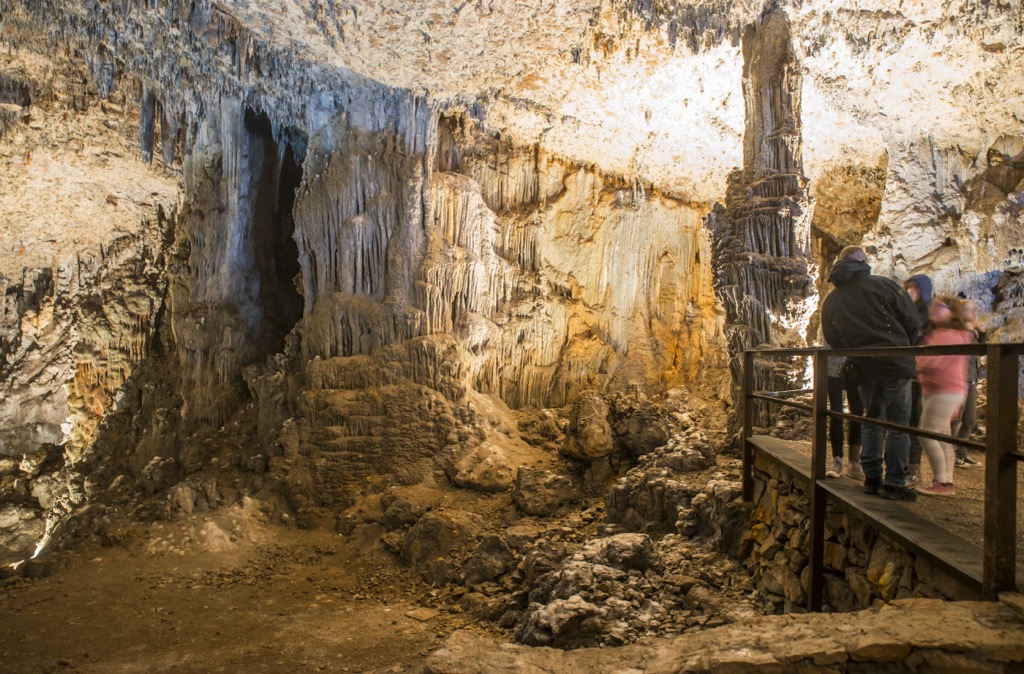
Trieste (pop. 200,000) is at the crossroads of Latin, Slavic, and Germanic worlds. Situated on the edge of the Adriatic Sea and close to the Slovenian border, Trieste has long served as a major port and a gateway between Eastern and Western Europe. The city boasts neoclassical buildings, ornate Habsburg-era palaces, and a picturesque waterfront. Trieste is also famous for its coffee culture, with historic cafés that writers like James Joyce and Italo Svevo once frequented. Val Rosandra and the nearby Karst plateau are a popular outdoor getaway.
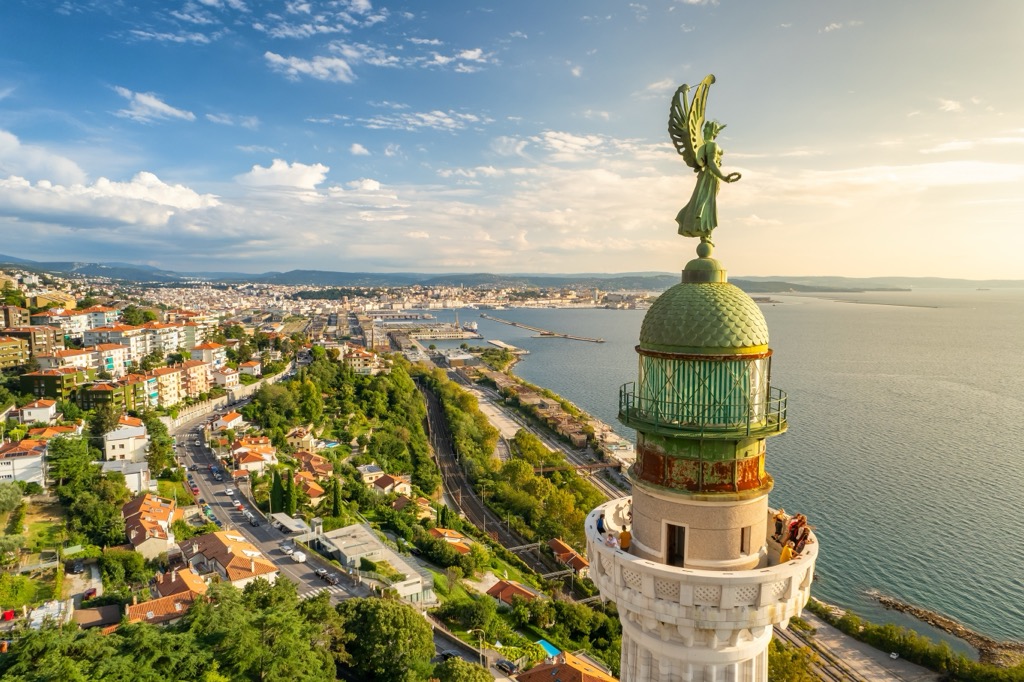
Koper (pop. 25,000), a coastal town in southwestern Slovenia, is the country's largest port and gateway to the Adriatic Sea. Koper's old town is a maze of narrow, winding streets and squares, with landmarks such as the Praetorian Palace, the Cathedral of the Assumption, and the 15th-century loggia showcasing its architectural heritage.
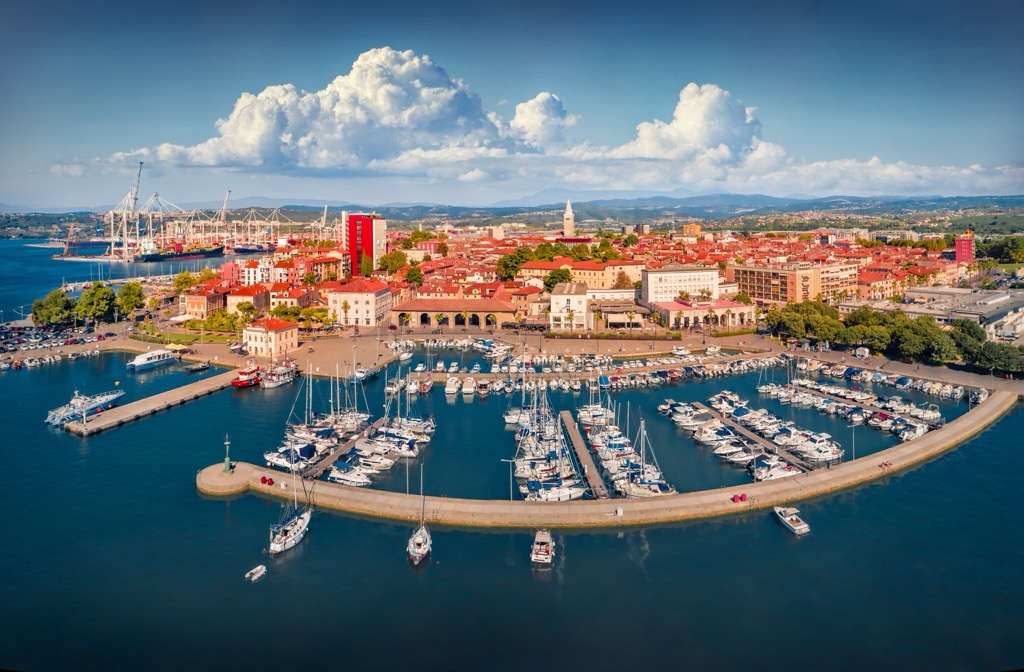
Muggia (pop. 13,000) is a charming seaside town on the Bay of Muggia, near the Slovenian border in northeastern Italy and just a short distance from Trieste. The town was part of the Venetian Republic for centuries, and the old medieval city is a maze of narrow alleys, colorful facades, and bustling piazzas, with landmarks like the Muggia Cathedral and the Venetian-Gothic Town Hall.
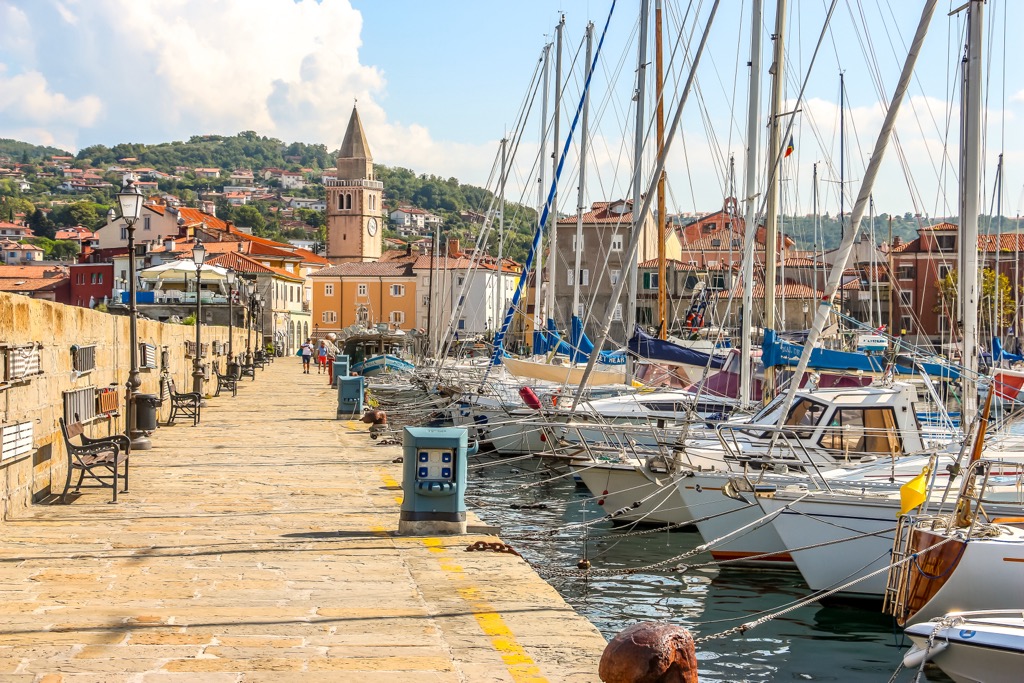
Explore Riserva Naturale Val Rosandra / Naravni rezervat Dolina Glinščice with the PeakVisor 3D Map and identify its summits.








